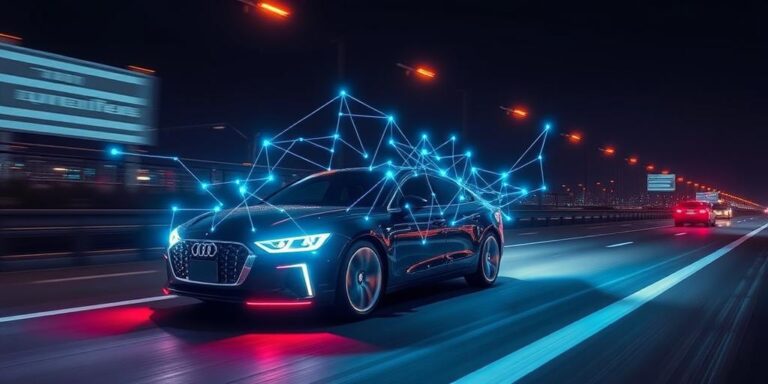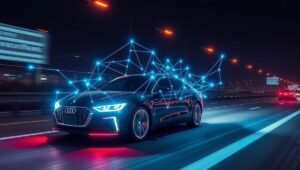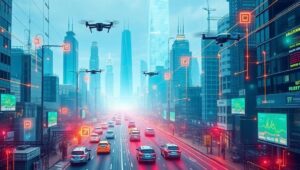Automotive Cybersecurity: Securing the Connected Car (2026)
The automotive industry is undergoing a massive transformation, driven by the increasing connectivity and integration of technology into vehicles. While this evolution brings numerous benefits, it also introduces significant cybersecurity risks. This article provides an overview of the current state of automotive cybersecurity, the challenges involved, and the measures being taken to secure the connected car in 2026.
The Rise of the Connected Car
Modern vehicles are no longer just modes of transportation; they are sophisticated computing platforms on wheels. Connected cars offer a wide array of features, including:
- Infotainment Systems: Providing navigation, entertainment, and connectivity to the internet.
- Telematics: Offering vehicle diagnostics, emergency services, and remote control via smartphone apps.
- Advanced Driver-Assistance Systems (ADAS): Including features like adaptive cruise control, lane-keeping assist, and automatic emergency braking.
- Vehicle-to-Everything (V2X) Communication: Enabling cars to communicate with other vehicles, infrastructure, and pedestrians.
Cybersecurity Risks and Challenges
The increasing connectivity of vehicles exposes them to a range of cybersecurity threats. These risks can be categorized as follows:
- Remote Hacking: Attackers could remotely access and control vehicle systems, potentially compromising safety-critical functions like braking and steering.
- Malware Infections: Vehicles can be infected with malware through compromised infotainment systems, USB drives, or Over-The-Air (OTA) updates.
- Data Breaches: Connected cars collect vast amounts of data about drivers and their habits, which could be stolen or misused in a data breach.
- Denial-of-Service (DoS) Attacks: Attackers could flood vehicle systems with traffic, disrupting their normal operation.
- Supply Chain Vulnerabilities: Security flaws in third-party components or software could be exploited to compromise vehicle systems.
Addressing these cybersecurity risks requires a multi-faceted approach, involving collaboration between automakers, suppliers, cybersecurity experts, and regulators.
Security Measures for the Connected Car
To mitigate the cybersecurity risks associated with connected cars, several security measures are being implemented:
- Secure Communication Channels: Encrypting communication between vehicle systems, external devices, and cloud services to prevent eavesdropping and tampering.
- Intrusion Detection and Prevention Systems (IDPS): Monitoring vehicle networks for malicious activity and automatically blocking or mitigating threats.
- Secure Boot and Firmware Updates: Ensuring that only authorized software can be installed on vehicle systems, and that updates are delivered securely.
- Segmentation and Isolation: Separating critical vehicle systems from non-critical ones to limit the impact of a potential security breach.
- Vulnerability Management: Regularly scanning vehicle systems for vulnerabilities and patching them promptly.
- Security Audits and Penetration Testing: Conducting regular security assessments to identify and address potential weaknesses.
The Role of Industry Standards and Regulations
To promote automotive cybersecurity, several industry standards and regulations are being developed and implemented. These include:
- ISO/SAE 21434: An international standard for cybersecurity engineering in the automotive industry, providing a framework for managing cybersecurity risks throughout the vehicle lifecycle.
- UNECE WP.29: A set of regulations developed by the United Nations Economic Commission for Europe (UNECE), covering cybersecurity and software updates for vehicles.
- NIST Cybersecurity Framework: A framework developed by the National Institute of Standards and Technology (NIST), providing guidance for organizations to manage and reduce cybersecurity risks.
These standards and regulations help to ensure that automakers are taking appropriate measures to secure their vehicles against cyber threats.
The Future of Automotive Cybersecurity
As connected cars become more sophisticated and integrated into our lives, cybersecurity will continue to be a critical concern. In the future, we can expect to see:
- Increased Automation of Security Measures: Automated tools and techniques for detecting and responding to cyber threats.
- AI-Powered Security Solutions: Using artificial intelligence and machine learning to identify and mitigate emerging threats.
- Collaboration and Information Sharing: Increased collaboration between automakers, suppliers, and cybersecurity experts to share threat intelligence and best practices.
- Cybersecurity Education and Awareness: Raising awareness among drivers and consumers about the importance of automotive cybersecurity.
By taking proactive measures to address cybersecurity risks, we can help ensure that the connected car remains a safe and reliable mode of transportation in the years to come.
Conclusion
Automotive cybersecurity is a critical challenge in the age of the connected car. By implementing robust security measures, adhering to industry standards and regulations, and fostering collaboration and information sharing, we can help secure the connected car and protect drivers from cyber threats. As technology continues to evolve, ongoing vigilance and adaptation will be essential to maintaining a secure automotive ecosystem.




